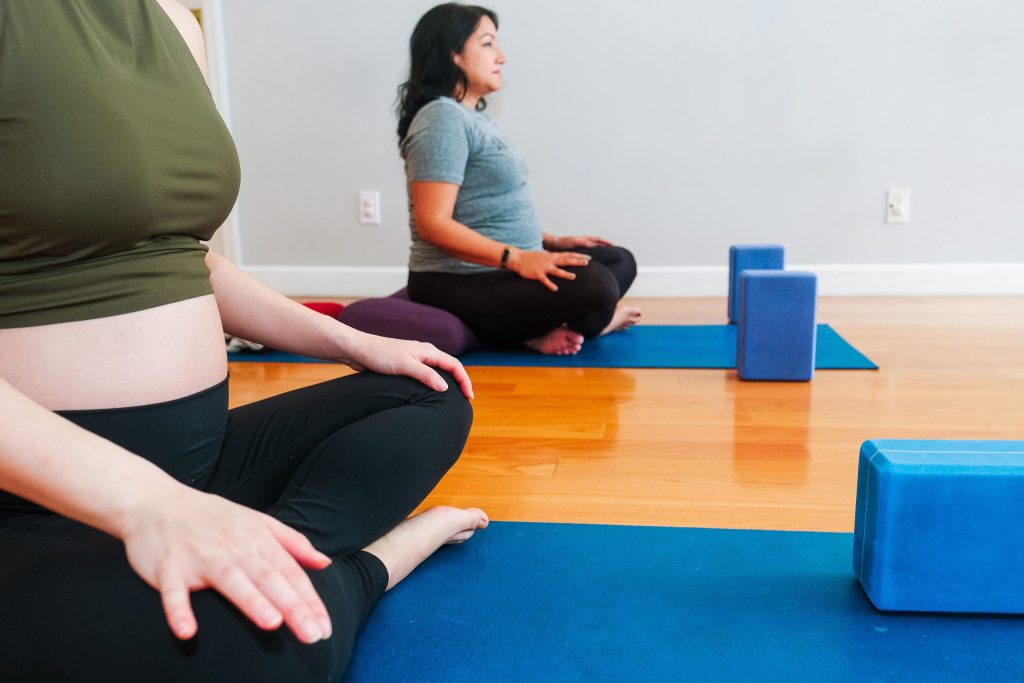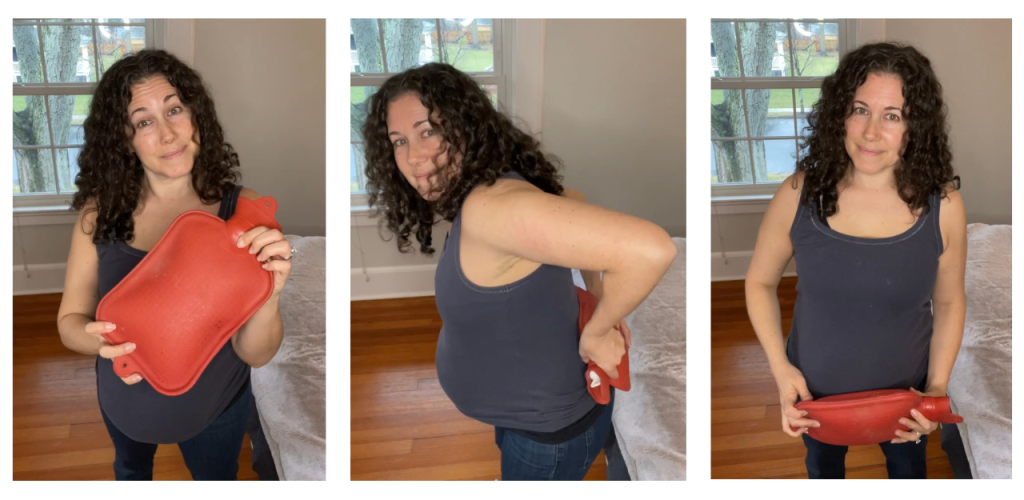Navigation
Labor is one of the most intense experiences a body can go through. Whether you’re planning an unmedicated birth or simply want to delay the use of pain medication, learning practical pain coping techniques for labor can make an enormous difference. These strategies don’t eliminate contractions—they help you work with them, stay calm, and feel more in control.
After years of supporting birthing people as a doula and prenatal yoga teacher, I’ve seen what really works. Here are four evidence-based, time-tested pain-coping tools you can count on in labor.
Breathwork: Anchor Your Mind and Body

Your breath is always with you, which makes it one of the most reliable labor tools. Conscious breathing regulates your nervous system, reduces tension, and helps you stay grounded even in the most intense moments. mechanics helps keep the spine neutral and reduce strain on the back and pelvis.
- Why it works: Stress and pain can cause muscles to tighten, which can actually make contractions feel more intense. Deep, mindful breathing interrupts this cycle, calming your body and keeping oxygen flowing to your baby.
- How to practice: Try Sama Vritti (equal part breath). Inhale for a slow count of four, exhale for a slow count of four. Add a calming mantra like “let go” on the exhale to help release tension.
- Bonus: Practicing during pregnancy means it will feel second nature when you need it most.
Hot Water Bottle or Warm Compress: Soothing with Heat

Sometimes the simplest tools are the most effective. Applying heat to the lower belly, hips, or back can be incredibly soothing during contractions.
- Why it works: Heat activates the Gate Theory of Pain Management, which suggests that pleasant sensations (like warmth) can “close the gate” on pain signals traveling to the brain.
- Benefits: Eases uterine ligament tension, provides comfort and grounding, and reduces overall pain perception.
- How to use it: A hot water bottle, heating pad, or warm compress can all work—just be sure the temperature is comfortable and safe.
Counter Pressure: Partner Support for Back Labor

As the baby descends, they may press into the sacrum—the triangular bone at the base of the spine. This can cause intense back pain, often called back labor. Counter pressure can bring immediate relief.
- Why it works: Applying firm pressure to the sacrum disperses the force of contractions and provides a stabilizing sensation. Like heat, it also taps into the Gate Theory of Pain to reduce pain signals.
- How to practice: Your partner or support person presses the heel of their hand or a firm object (like a massage ball) into the sacrum during contractions.
Pro tip: Practice this technique before labor so your partner feels confident applying the right amount of pressure.
Sound and Vocalization: Releasing with Your Voice
Sound may not be the first thing people think of for pain relief, but vocalization is one of the most powerful, underutilized tools in labor.
- Why it works: Low, open vocal tones (like humming or moaning) help relax the jaw and pelvic floor, release endorphins (the body’s natural pain relievers), and keep breath flowing smoothly.
- How to practice: Experiment with different sounds in prenatal yoga or childbirth class—try a long “ahhh” or “oooh.” Keeping sounds low and open encourages the body to soften.
Extra benefit: Making sound can also reduce fear and keep you from holding your breath, which often intensifies discomfort.
Why These Techniques Matter
These four coping strategies are simple, safe, and versatile. You can use them whether you’re aiming for an unmedicated birth or planning to get an epidural later but want to delay interventions as long as possible.Each technique can be done solo or with partner support, and they can be rotated throughout labor depending on what feels most effective in the moment. Preparing these tools in advance means you’ll have a labor coping toolkit ready when contractions begin.
Practice Makes Progress
Birth is unpredictable—you can’t plan every detail. But by practicing pain coping techniques ahead of time, you give yourself the ability to meet labor with more calm, focus, and confidence. These tools don’t guarantee a painless labor (nothing can), but they can shift how you experience contractions, helping you feel less overwhelmed and more empowered.
✨ At Prenatal Yoga Center, we practice these pain-coping techniques in our classes and workshops so they feel natural when labor begins. If you want to prepare for an empowered birth experience, join us for a prenatal yoga class or childbirth education series and start building your own toolkit.
To learn more about the Prenatal Yoga Center and the classes that we offer. Click below to view our class schedule.
Related Reading & Listening
Article : How Your Partner Can Support Your During Pregnancy and Birth
Podcast: Everything You Need to Know About Hiring A Doula with Francie Webb
Article: TENS Machine — Transcutaneous electrical nerve stimulation

